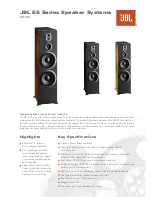
iv
installation
&
operation
manual
|
dlv
heating
system
3.4
PRESSURE RELIEF VALVE |
12
3.5
HIGH-LIMIT TCR (TEMPERATURE CONTROL RELAY) |
12
3.6
CONTROL TCR (TEMPERATURE CONTROL RELAY) |
12
4
HEATING SYSTEM START-UP |
13
5
MAINTENANCE, REPAIR AND TROUBLESHOOTING |
14
5.1
COOLANT/OIL FAULTS |
14
5.2
SYSTEM MAINTENANCE |
14
5.2.1
Plumbing Connections |
14
5.2.2
Electrical Connections |
14
5.2.3
System Mounting |
15
5.2.4
Magnetic Contactors |
15
5.2.5
Pump Seal |
15
5.2.6
Motor Lubrication |
15
5.2.7
Coolant Pressure Relief Valve |
15
5.2.8
Oil Pressure Relief Valve |
15
5.2.9
Coolant & Oil Pressure/Temperature Gauges |
15
5.2.10
Volatile Corrosion Inhibitor (VCI) |
15
5.2.11
Temperature Control Relay (TCR) |
16
5.2.12
Resistance Temperature Device (RTD) |
17
5.2.13
Heating Tank/Element |
18
5.2.14
Reassembly of Heating Element and Tank |
18
5.3
RECOMMENDED MAINTENANCE |
20
5.4
STORAGE REQUIREMENTS |
20
5.5
TROUBLESHOOTING |
21
TABLE OF CONTENTS







































